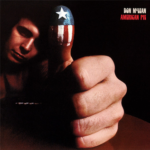loading...

by Danny Byram | Jan 16, 2019 | Church Leadership, Contemporary, Gratitude, Leadership, Liturgical, prayer, Worship, worshipmusic

Downloading tracks. Downloading charts. Finding the right song in the right key. Shooting videos for social media. Setting rehearsal time. Changing rehearsal time. Your drummer cancels on Friday. Lead female vocalist gets a throat infection. The smoke machine breaks down at stage left. Endless chase of the latest gear. Planning time with the team. Meeting with pastoral staff. Budget cuts. Time restraints within the service. Cut a song. Cut two. Your prepared remarks between songs were criticized in the staff meeting. Don’t say anything anymore – just do the music. You’re told: You’re not a pastor, just a musician.
Congregants don’t see these frustrations behind the scenes. They come and watch each week as you pull it off seamlessly like a pro. Yet you feel you have to hold it all inside. Keep it together. The pressure and frustration of what you once felt was your calling has become a job – or worse, a machine; predictable, produced, even pretentious. You are noticing you haven’t been alone in God’s presence for quite a while. You catch a prayer when you can. Your fuse is becoming shorter. Things that used to not bother you, bother you. That “sin that so easily besets you” emerges again. You confess and move on but it comes back anyway.
Sound familiar? Where is God in the worship grind? What is described above used to be exclusive to larger churches. Now, with social media expectations – a worship-music industry driving its images and products – and church growth formulas nipping at our heels – is it any wonder why churches of 200 or less are experiencing the grind as well?
Jeremiah 33:3 serves as a benchmark to busy activity, massive scheduling, goal setting, and strategic planning. “Call to me and I will answer you, and I will show you great and mighty things which you do not know.” (NASB). So, what is it we don’t know, that we need to know? Our gear is great, our media is moving, our following fantastic, our image immaculate, and our hearts are humble!
Consider the context of Jeremiah 33:3. For the first 32 chapters, God is using Jeremiah as His mouthpiece to speak prophetic words to the people of Israel and their leaders. Though the book is not laid out chronologically, it is apparent this far into the story that Jeremiah is still in need of knowing “great and mighty things” which he hasn’t yet discovered. God requires His “mouthpieces” to call to Him, and then listen.
Finding God in the worship grind will either happen by our own choice or by His choice. God will be found because we are awed by His sacredness – or – we are stopped in our tracks because the gears of the grinder have come to an abrupt halt. I have experienced both. I prefer the former not the latter. Believe me, you do too.
Recommended books: “Letters To The Church” – Francis Chan. “Abba’s Child” – Brennan Manning
Photo by Ben White on Unsplash

by Danny Byram | Oct 29, 2018 | Church Leadership, Contemporary, Leadership, Liturgical, Traditional, Worship, worshipmusic

I’ve always found the phrase – “We’ve always done it this way” – annoying. I remember my parents (dad a clergyman, mom a church musician) using it when it came to church music and worship. Their form was an organ on one side, piano on the other with a choir in robes in the middle. They knew nothing different. No matter where we would attend, in a different town or state, the form of worship – as well as the nomenclature by leaders and worshippers – was identical. This was it for hundreds of years until the Jesus Movement (cr 1968-74) changed everything. Guitars, folk instruments and undergrads in casual clothing began to appear on church platforms. Many times these young, excited believers were escorted out of the church by older church leaders likely grumbling: “We’ve always done it this way.”
I hear the phrase still used today, but not by crotchety, balding believers of a greying generation. It is spoken by church leaders in their late 20s and early 30s. In place of pianos, organs and choir chairs the platforms are filled with drum cages, keyboard rigs and Stratocasters with effects pedals. Overhead are multi colored light rigs, massive video screens, smoke machines and video jib arms. While performing (oops…leading), a shoulder cam operator runs around the stage up into the faces of those performing (oops…there I go again…LEADING). When I talk with these young leaders, to suggest perhaps using an ancient creed – or a variety of instrumentation – or responsive reading of scripture – or an acapella every demographic knows (like Amazing Grace without added lyrics from last year’s “radio worship artist” release), here comes the phrase: “We’ve always done it this way.” Like my parents, they know nothing different. Today, no matter where I attend, in a different town or state, the form of worship – as well as the nomenclature by leaders and worshipers – is identical.

Where we are in the “worship cycle” is the youth group rock bands of church basements from 15-20 years ago have come of age. They are now the decision makers in charge of church budgets. What used to be relegated to youth groups, with dilapidated gear from teenage bedrooms, is now polished, front and center. The vibe is: “we’re in charge now, and we’re gonna do this right.” Just like my parents, the current form is all they’ve known.
Increasingly normal is the online streaming of these worship services (oops…”worship experiences.”) Technology has perfected to allow local church platforms to be viewed online for millions of unnamed, unknown, un-faced fans. Many leaders have told me because their online audiences are exponentially larger than their local congregation, onliners are the group they are actually playing to. The attending congregants are now the studio audience for the larger group, somewhere out there watching and giving offerings on their phones.
What an interesting age in which we are doing church. Even though some young families are walking away to start home churches to “do life together,” the current form is firmly established. A cursory historic observation reveals that trends cycle because of a movement, started in spite of the church’s instituted ways, and usually under the church’s nose. No one knows when or where the next movement will start or how it will bring change. But why it will start is likely found behind the phrase: “We’ve always done it this way.”
“All that now is will be forgotten in the days to come.” Ecclesiastes 2:16
Singer/Songwriter/Speaker/Author Danny Byram has performed on over 100 US military installations worldwide. He toured South Korea 15 times & has performed/spoken to US troops in Iraq, Kuwait, Bahrain, Europe, Central America, South America, the Pacific Rim and aboard many surface vessels. His work earned him the name “The Combat Musician.” Danny produced and directed 26 Promise Keepers Stadium Events for men, including the Clergy Conference (largest gathering of clergy in history) and co-directed Stand In The Gap, Washington DC, which drew over a million men to the National Mall. He produced and directed 36 FamilyLife Arena Events for couples working alongside Marantha! Music and Integrity Inc. Danny and Angela Byram live in Colorado and have 3 adult children and two grandsons.
Photos: Top: Rachel Lynette French@rachellynette Middle: Abigail Lynn@shmabbss

by Danny Byram | Sep 24, 2018 | Church Leadership, Leadership, Music & Songwriting, Worship, worshipmusic

I love living in this age of ministry. I wish it had come sooner. In my early Christian/singer/songwriter career in the 1990s, most churches and military chapels where I performed still reflected the church architecture of the 1920s. A piano on one side, organ on the other, 50 choir chairs as a backdrop – you get the picture. We would arrive, and begin moving the chairs, move the piano up on stage, and figure out where to put the heavy wooden pulpit. Then, hunt for a 6-foot folding table and position it on top of the pews where we could mix sound. Finally, we would haul in our sound system. At the time, most church PA (Public Address) systems were designed for talking heads, and guaranteed fidelity akin to AM radio news coming through 3″ speakers in a 1965 Plymouth.
We used to moan and dream about the day when church platforms would be designed for communicating with the tools that the rest of the performing world were using: lighting, screens, and world-class sound. As usual, the church was decades behind. But we’ve caught up! Yay! Today I only have to show up, plug in and play. Oh yeah…and minister the Gospel. But now, with all the gear and gadgets, we can also entertain while we minister truth. How cool. How relevant. How risky. Here’s why…
While entertainment can communicate truth, its greater purpose is to distract, help us forget our pain and temporarily check out of reality. True worship makes us focused, aware, and present in the reality of how much we need God’s grace and mercy. That reality can be hard on us emotionally as we stare into His holiness and have a similar reaction as Isaiah: “I am undone for I am a man of unclean lips and I dwell among a people of unclean lips.” (Isaiah 6:1-5) It is very human to want to skip the emotional challenge of facing His holiness and our un-holiness.
I can already hear some reacting: “Wait! We are more than conquerors – We share the righteousness of Christ – God doesn’t see our sin anymore – He suffered so we wouldn’t have to!” Absolutely correct. Yet the paradox in those truths is we can be incredibly naïve to think the Christian experience is for the purpose of eliminating discomfort, especially how, when or where we are triggered to stumble, even as believers. Paul assured us (2 Corinthians 7:10) that kind of “Isaiah sorrow” is an appropriate response to God’s presence, for that kind of sorrow leads us away from sin’s influence and into His holiness, which transforms us (Isaiah 6:6-7). We don’t need more information. We need more transformation.
True worship leads us away from ourselves, our preferences, our tastes, our story and into His heart, His reality, His preferences, His story. We say we have the greatest life-changing Gospel message the world has ever heard. Yet it takes more gear, better gadgets and shorter sound bites to get people to pay attention. What an interesting age in which we live!
Want entertainment with your Gospel? Fine. It’s available everywhere. Just remember it’s simply a tool to communicate a Gospel that can be uncomfortable yet truly life-changing.
“Let us consider how to stimulate one another to love and good deeds, not forsaking our own assembling together, as is the habit of some, but encouraging one another; and all the more as you see the day drawing near.” Hebrews 10:24-25

by Danny Byram | Aug 27, 2018 | Church Leadership, Leadership, Worship, worshipmusic

Johann Sebastian Bach (1685-1750) is recognized by musicians as the greatest of church music composers. However, Bach was not interested in congregational singing. Here’s why.
Bach’s goal was to compose the greatest music ever performed in church. He succeeded. Throughout the Baroque period as the pipe organ grew in popularity – and in its ability to mimic orchestral instrument sounds – organists became more skilled in mastering the instrument. Bach’s music was so good and advanced, it challenged the skills of instrumentalists and singers. What resulted was ornamental interludes between hymn stanzas and excessive alteration of hymn tunes. Lead singers (in the Italian operatic style of the day), as well as instrumentalists, would take off on a credenza (a fancy musical term for “licks”) leaving congregational singing in the dust. When the composer, instrumentalists or vocalists hid what was familiar to their congregants inside fancy arrangements or behind their excellent abilities, it gave the signal to congregants: “Just listen to what we know how to do!”
Does this sound familiar? It seems the Baroque phenomenon has recycled. When congregants gather today to sing together but are given a concert performance with 80% new music, and 20% familiar songs hidden inside of elaborate arrangements – which become un-singable except for those performing them – the message is clear: “Just listen to what we know how to do!”
Throughout history, the church had eras of glorious corporate worship followed by stumbles into observation-based passivity. Some of these periods lasted for hundreds of years until an outside movement helped the church find her voice again and she began to worship God in new ways that were alive in spirit and truth. If we fail to consider the historical context in which we inherited the practice of worship, we find ourselves repeating the mistakes of the past, no matter how well we gift wrap those mistakes.
The good news is: if it’s “baroque,” it can be fixed! (Worship Workshops). There is already a groundswell movement among younger believers who recognize the ruse. People are not stupid. When they walk away from church feeling used as an audience for a weekly group of performers, get ready for a movement to start. I hear stories constantly: people leave for coffee during the music; some arrive purposely late; others are skipping the show altogether and meeting in homes. Even Christian leaders and book publishers I talk with are asking: “What has happened?” A better question to ask is: “What is getting ready to happen?”
Wallpaper Worship is self-correcting. An institution never starts a movement to correct itself. Church movements always start under the church’s nose. People eventually leave what they feel is rote, to find that which they feel is real. Some megachurches may still be filling seats and parking lots. But pastors, worship leaders, and lay leaders tend to ignore fixing anything until they see numbers plateau or decline. Meanwhile, many worshipers – who are leaving in search of deeper waters – are asking “how many cupcakes can I eat until my body demands something more substantial?” Trends always cycle. If it’s “baroque,” it will be fixed, one way or another.
“In Wallpaper Worship, Danny Byram defuses all the pointless dichotomies that so many books on worship get lost on. He gets to the core issues as only someone who has been involved for decades in shaping worship services, both great and small, could do. This book is not about changing our methods, but how our hearts can be changed by shifting priorities and focus and by learning to truly care for those who find themselves simply showing up and lining the walls during worship.” – Michael Card, Songwriter, Author, Bible Teacher
Wallpaper Worship: Why Church Music Sounds Better, Fewer Are Singing, And What To Do About It

by Danny Byram | Jun 22, 2018 | Church Leadership, Music & Songwriting, Worship, worshipmusic
As a songwriter, I have subscriptions to online periodicals that keep me updated on what’s going on in the songwriting and recording industries. One publication sends out a monthly notice of recording artists and companies looking for new song material of all genres. Recently a request came through that caught my eye. It was for a group looking for new songs for their upcoming Christian recording. The description of the kind of song they are looking for read: “Uplifting Christian with solid beat. Lyrics must not contain Bible references or Jesus or God.”
My first thought was this cannot be serious. That’s like asking for love songs that don’t mention love. Then, other thoughts emerged: do consumers of “uplifting Christian music” understand a phrase like that as self-contradicting? Do Christian consumers know this is going on prior to the release of what they are hearing played on the radio?
After attending a local megachurch service, I evaluated the songs performed by the band on the platform. There were songs that spoke clearly of Jesus and contained direct scriptural phraseology. There were also songs that could have been used in any context, with any religion that professes a positive tone (Buddhist, Baha’i, Shinto). The lyrics were uplifting, the beat was “solid,” but no reference to anything that was exclusively Christian.
Those of us who grew up in the origins of what became known as Contemporary Christian Music remember well when Christian music started receiving secular radio airplay. Most of those songs that passed the “airplay audition” were toned down in religious-speak to give a positive message with a veiled Christian meaning, so as to gain access to a wider audience. At the time, some staunch consumers of Christian music were offended, boycotting artists who released such songs. But the industry’s purpose was accomplished: put Contemporary Christian Music into the mainstream marketplace and let the listeners decide if it’s acceptable.
Today there is a much more specialized genre within Christian music: Worship. This genre title supposedly denotes songs that speak of one’s intimate response to the Object of Worship, namely God the Father, God the Son, God the Holy Spirit. To call a song a “worship song” implies perhaps that it has more substance than simply a song about love and grace, albeit God’s love and grace. A “worship song” categorically qualifies lyrically to be used within corporate worship contexts by its: a) declaration of God’s works or attributes (News Flash: we get those in the Bible); b) response of humankind to His works or attributes; or c) ability to express devotional reflection of how His unique attributes, works, and divine Self (yes, it’s a good idea to name Who we are worshiping) has transformed one’s life.
When songs presented in a worship service possess no lyrical references to God, Jesus or scripture, is it fair to assess, sweet as the song may be, that it may not qualify to be called “Christian” much less “Worship?” There is a lot of good music out there – and a lot of uplifting songs in many popular genres, and many that are written by songwriters who happen to be Christians. God bless them! Yet, those who lead crowds from church platforms would shepherd their sheep well to be careful in choosing songs that are worthy of being used within a worship context. Everything called “Christian” may not necessarily be; everything called “Worship,” ditto.

















